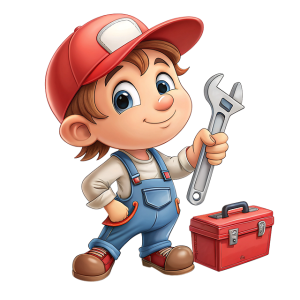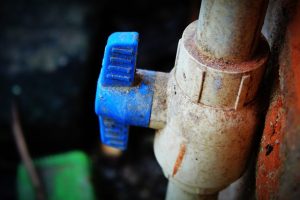plumbing and HVAC services
Plumbing and HVAC Services: A Comprehensive Overview
Introduction
Plumbing and Heating, Ventilation, and Air Conditioning (HVAC) systems are the unsung heroes that keep our modern world running smoothly. From ensuring a constant supply of clean water to regulating indoor climates, these services form the backbone of comfortable, healthy, and efficient living and working environments. This article aims to provide an in-depth exploration of plumbing and HVAC services, delving into their historical development, global reach, economic significance, technological innovations, regulatory landscape, challenges, and future prospects. By the end, readers will have a comprehensive understanding of this vital sector and its impact on our daily lives.
Understanding Plumbing and HVAC Services: A Foundation in Comfort and Safety
Definition and Core Components
Plumbing and HVAC services encompass a wide range of activities focused on designing, installing, maintaining, and repairing systems that facilitate the distribution of water, management of indoor air quality, and climate control. The core components include:
-
Plumbing: Involves water supply lines, drainage systems, sewers, and fixtures. It ensures the delivery of potable water for drinking, bathing, and sanitation, while efficiently removing wastewater.
-
HVAC Systems: Comprise heating units, ventilation fans, air conditioning units, and ductwork. These systems regulate indoor temperature, humidity, and air quality, ensuring comfort and minimizing health risks.
Historical Context and Significance
The origins of plumbing can be traced back to ancient civilizations like the Mesopotamians and Romans, who developed sophisticated water supply networks and drainage systems. Over time, plumbing evolved with advancements in materials and techniques, leading to modern systems that are more efficient and safer. Similarly, HVAC technology has come a long way since the early days of open fireplaces and manual ventilation, evolving into highly sophisticated, energy-efficient systems.
Today, these services are integral to the well-being and comfort of buildings’ occupants. They contribute significantly to public health by ensuring access to clean water and preventing the spread of diseases associated with poor sanitation or indoor air quality. Furthermore, they play a crucial role in energy conservation and environmental sustainability through efficient water and energy usage.
Global Impact and Trends: A Worldwide Network
International Influence
Plumbing and HVAC services have a profound global impact, shaping urban development, infrastructure, and the overall quality of life. Key trends indicate a growing demand for these services worldwide due to several factors:
-
Urbanization: The rapid expansion of cities leads to increased pressure on water supply systems and calls for efficient HVAC solutions to manage the heightened energy demands of urban areas.
-
Population Growth: A rising global population translates into a larger need for safe drinking water, improved sanitation, and comfortable indoor environments.
-
Environmental Awareness: Growing environmental consciousness is driving the adoption of sustainable plumbing and HVAC practices, such as water recycling, energy-efficient systems, and green building designs.
Regional Variations and Trends
Different regions exhibit unique challenges and trends in plumbing and HVAC services:
| Region | Key Trends/Challenges |
|---|---|
| North America | Increasing emphasis on smart home technology integration, retrofitting older buildings for energy efficiency, and adopting sustainable water management practices. |
| Europe | Strict environmental regulations driving the adoption of eco-friendly systems, focus on renewable energy sources for heating and cooling. |
| Asia Pacific | Rapid urbanization presenting challenges in infrastructure development, especially in terms of water supply and sewage management. |
| Middle East & Africa | Focus on innovative solutions due to extreme climates, including advanced desalination techniques for water supply and smart building technologies. |
Economic Considerations: A Driving Force
Market Dynamics
The plumbing and HVAC services market is a significant economic sector, with various sub-sectors contributing to its growth:
- Residential: Involves installing and maintaining systems in homes, an ever-growing segment due to rising homeownership and urbanization.
- Commercial and Industrial: Serves offices, retail spaces, hospitals, hotels, etc., requiring specialized solutions for larger, more complex facilities.
- Government and Infrastructure: Covers public buildings, schools, airports, and transportation hubs, with a focus on long-term sustainability and efficiency.
Investment Patterns
The industry attracts substantial investment due to:
-
Infrastructure Development: Governments worldwide invest heavily in plumbing and HVAC infrastructure to support economic growth and improve living standards.
-
Retrofitting and Upgrades: Older buildings often require modernization of their plumbing and HVAC systems, presenting opportunities for renovation and energy efficiency upgrades.
-
Smart Cities Initiatives: Many cities are embracing smart city concepts, integrating advanced plumbing and HVAC technologies to optimize resource usage and enhance urban livability.
Technological Advancements: Revolutionizing the Industry
Innovations Shaping the Sector
Technological progress has been transformative in plumbing and HVAC services, leading to:
- Smart Home Integration: Internet of Things (IoT) devices enable remote monitoring and control of plumbing and HVAC systems, enhancing energy efficiency and user convenience.
- Renewable Energy Sources: Adoption of solar, geothermal, and other renewable technologies for heating, cooling, and water heating, reducing carbon footprints.
- Advanced Material Science: New materials like corrosion-resistant pipes, high-efficiency insulation, and smart sensors improve system performance and longevity.
- Data Analytics: Digitalization allows for data-driven decisions, enabling predictive maintenance, energy optimization, and improved customer service.
Future Outlook
The future holds immense potential for technological advancements, with research focusing on:
- Artificial Intelligence (AI): AI-powered systems could optimize HVAC operations, predict maintenance needs, and enhance building automation.
- Blockchain: This technology can ensure secure data sharing and streamline transactions in the industry, improving supply chain management and service delivery.
- 3D Printing: Could revolutionize manufacturing, allowing for customized, efficient components and faster system prototyping.
Regulatory Landscape: Ensuring Safety and Sustainability
Government Regulations
Plumbing and HVAC services are heavily regulated to ensure safety, quality, and environmental protection. Key regulatory bodies and considerations include:
- Building Codes: Local authorities enforce building codes that dictate minimum standards for plumbing and HVAC systems, ensuring safety and efficiency.
- Environmental Standards: Governments set guidelines for water conservation, emissions control, and waste management to minimize the industry’s environmental impact.
- Energy Efficiency Ratings: Many countries mandate energy efficiency ratings for HVAC equipment, encouraging the use of high-efficiency systems.
Industry Associations and Certifications
Various industry associations play a crucial role in:
- Developing standards and guidelines for best practices in plumbing and HVAC design, installation, and maintenance.
- Providing certifications for products and services, ensuring they meet specific performance, safety, and quality criteria.
- Offering training programs to enhance the skills of professionals in the field.
Challenges and Opportunities: Navigating the Path Forward
Overcoming Hurdles
Despite its growth, the plumbing and HVAC industry faces several challenges:
- Skilled Labor Shortage: The demand for skilled plumbers and HVAC technicians often exceeds supply, leading to skill gaps and labor shortages.
- Environmental Concerns: Balancing economic development with environmental sustainability remains a challenge, especially in regions with rapid urbanization and population growth.
- Regulatory Complexity: Navigating varying local regulations can be complex, particularly for multinational companies operating across different jurisdictions.
Embracing Opportunities
The industry also presents numerous opportunities:
- Smart Building Revolution: The integration of smart technologies offers immense potential to create efficient, interconnected buildings that optimize resource usage and enhance occupant comfort.
- Renewable Energy Integration: With the push for sustainable energy sources, plumbing and HVAC systems can play a pivotal role in reducing carbon emissions from buildings.
- Global Market Expansion: Rising global standards of living and increasing urbanization present opportunities for international collaboration and technology transfer.
Future Prospects: Shaping Tomorrow’s Comfort
Key Trends to Watch
The future of plumbing and HVAC services is likely to be shaped by:
- Sustainable Practices: Increased adoption of eco-friendly materials, water recycling, and energy-efficient systems will be a global priority.
- Digital Transformation: The industry will continue to embrace digitalization, leveraging data analytics, AI, and IoT for improved efficiency, predictive maintenance, and enhanced customer experiences.
- Global Collaboration: International partnerships will foster knowledge sharing, technology development, and standardized practices, ensuring a comfortable and sustainable future for all.
Conclusion
Plumbing and HVAC services are essential to modern life, providing the foundation for healthy, efficient, and comfortable environments. From historical developments to global trends and technological advancements, this sector has evolved significantly while facing new challenges. By embracing innovation, prioritizing sustainability, and investing in skilled labor, the industry can continue to thrive and shape a future where comfort and environmental stewardship go hand in hand.

Uncovering Plumbing Leaks: Source Identification in HVAC Systems
Plumbers employ a systematic approach to repair water leaks in plumbing and HVAC systems, starting with visual assessments and advanced…

Optimizing Indoor Air Quality: When to Replace Your Air Filter
Air filters in plumbing and HVAC systems are vital for maintaining indoor air quality, trapping dust, allergens, and pollutants. Their…